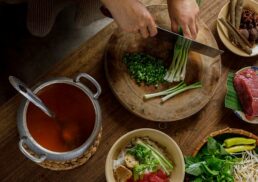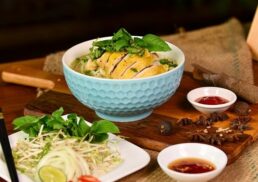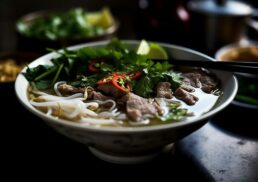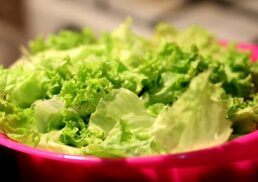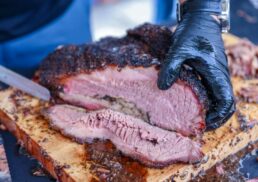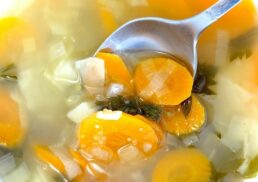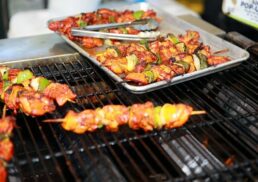Are you ready to embark on a captivating journey through the world of Vietnamese coffee? Known for its strong, robust flavor and the use of sweetened condensed milk, Vietnamese coffee offers a unique and delightful experience for coffee enthusiasts. In this blog post, we’ll guide you through brewing the perfect cup of Vietnamese coffee at home, exploring its rich culture, and even trying out some delicious recipes inspired by this beloved beverage.
Table of Contents
Key Takeaways
Brew your own unique and robust Vietnamese coffee with French roast grounds, water, condensed milk & a phin filter!
Adjust the drip rate for perfect blooming & compressing to experience delicious flavors.
Explore Vietnam’s vibrant culture of cafes & recipes inspired by authentic Vietnamese coffee beans!
The Essence of Vietnamese Coffee
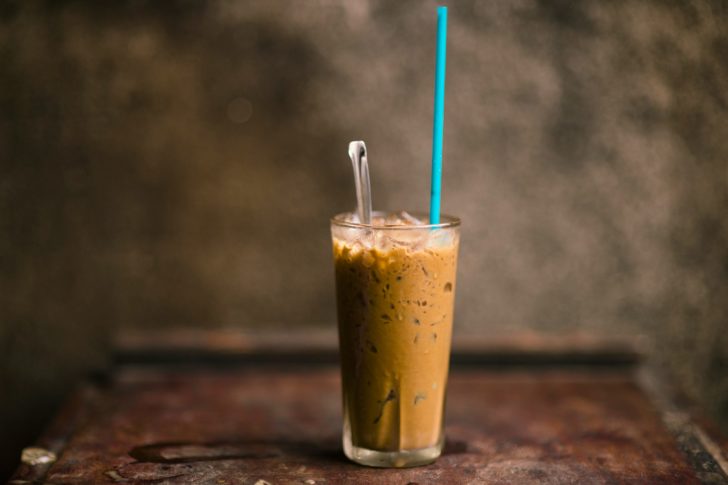
Vietnamese coffee, a gift from French colonization, has become a staple in Vietnamese culture, with its characteristic strong and robust flavor balanced by sweetened condensed milk. Vietnamese immigrants in the early days loved cafe du monde coffee, as it was the closest they could find to their homeland’s coffee.
To make a perfect cup of Vietnamese coffee, you will need:
French roast coffee grounds
Water
Condensed milk
A phin filter
Simply follow this Vietnamese coffee recipe using these ingredients and tools to make Vietnamese coffee.
Simply brew the coffee using the phin filter, and then mix it with condensed milk to taste. Enjoy your authentic cup today!
Vietnam is a major player in the global coffee market, being the second-largest coffee producer in the world and contributing to over 18% of global coffee exports. This prominence has led to the rise of Vietnamese coffee shops around the world, bringing the unique experience of enjoying Vietnamese coffee to a global audience.
The Art of Brewing with a Phin Filter
Brewing Vietnamese coffee using a phin filter is a traditional and fascinating process. This individual stainless steel coffee filter, made of three parts – the body, the press or filter disk, and the lid – sits on top of a glass and creates the perfect coffee drip for a delightful cup of Vietnamese coffee.
In the following subsections, we will explore the steps involved in assembling the phin filter, adjusting the drip rate, and troubleshooting common issues.
Assembling the Phin Filter
Assembling the phin filter is a straightforward but necessary part of brewing Vietnamese coffee. Here’s how to do it:
Start by placing the filter disk into the body of the filter, ensuring it sits securely on top of the coffee.
Measure three tablespoons of ground coffee. Distribute it evenly into the filter.
The lid plays an exciting role in the process by helping keep the coffee from losing heat or evaporating too much while brewing.
When the filter is assembled, place it on top of a heatproof glass and you’re ready to start the brewing process. The rim or lip of the filter allows it to rest on the glass with ease, making it convenient for brewing both hot coffee and iced coffee.
Adjusting for the Perfect Drip Rate
Modifying the drip rate of the phin filter is key to producing a potent, concentrated coffee akin to espresso. Here’s how to do it:
Pour two tablespoons of hot water into the filter.
Wait for 5 seconds to allow the coffee beans to “bloom”. The water releases CO2 from the coffee during blooming, making it an exciting part of the brewing process.
The grounds also expand when they come into contact with the water.
Next, gently press on the filter to compress the bloomed coffee, which helps slow down the drip rate when you use all of your water, making for a more flavorful coffee. Measure out 6 ounces of near boiling water for a 6-ounce phin filter, or use 8 ounces if you prefer a milder coffee.
Troubleshooting Common Issues
Brewing with a phin filter can come with its share of challenges, such as coffee taking too long to brew, brewing too quickly, or tasting watered down. Don’t worry! We’ve got some exciting solutions to help you troubleshoot these issues.
To prevent the phin filter from clogging, use a coarser grind size, avoid over-packing the filter, pre-wet the filter, and clean it regularly. If the coffee is dripping too slowly, adjust the grind size to be coarser, use less coffee, or experiment with the balance of grind size and coffee quantity to achieve the desired drip speed. Following these tips will help you master the art of brewing Vietnamese coffee with a phin filter.
The Role of Sweetened Condensed Milk
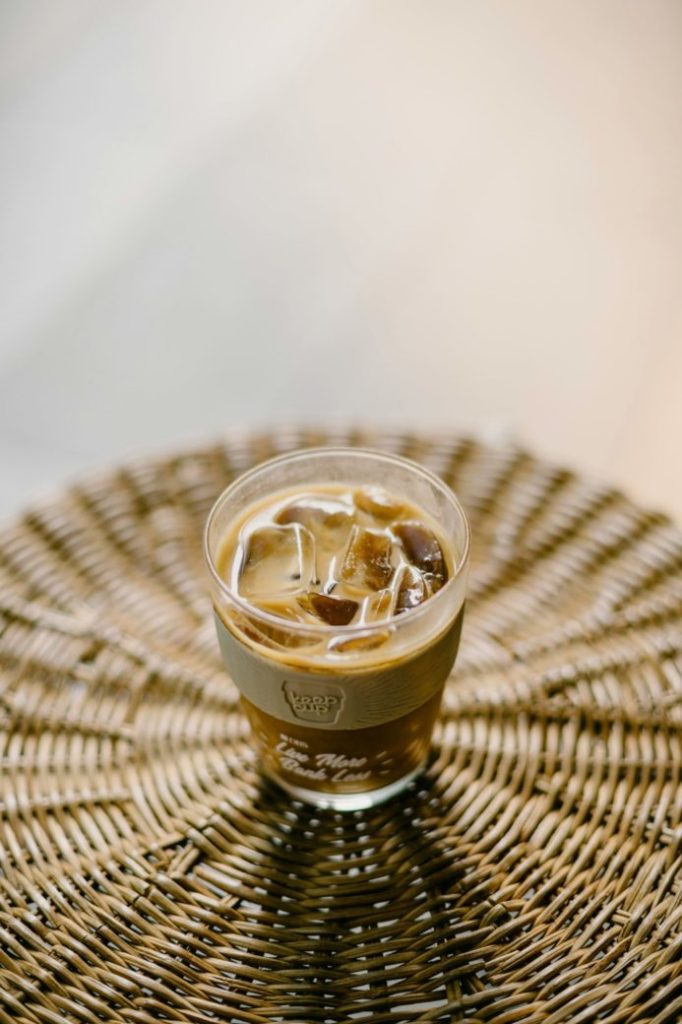
Sweetened condensed milk is integral to Vietnamese coffee, neutralizing the strong, bitter taste and yielding a rich, creamy beverage. Longevity Brand is highly recommended, but Eagle Brand and Trader Joe’s store brand in a squeeze bottle are also excellent options.
Sweetened condensed milk has its roots in Vietnam as a substitute for fresh milk in areas where refrigeration was not available. Its versatility extends beyond coffee, as it can be used in Asian desserts or drizzled on top of buttered toast or grilled bread, with cassava cake being a popular dessert that uses sweetened condensed milk.
Choosing the Right Beans
Selecting the appropriate beans, generally robusta or a mix of robusta and arabica, is vital for capturing the genuine flavor of Vietnamese coffee. Robusta coffee beans are the primary type grown in Vietnam and are known for their strong and nutty flavor.
Trung Nguyen is an acclaimed Vietnamese coffee brand that can be found in America. However, there are various other brands exporting and preparing Vietnamese coffee beans not available in the United States. Copper Cow Coffee is dedicated to creating a unique flavor experience. They blend the signature robusta and arabica varieties for a smooth, authentic taste. Early Vietnamese immigrants loved Café du Monde coffee, as it was the closest they could find to Vietnamese-grown coffee.
Roasting Techniques and Flavors
There can be a variation in the roasting techniques and flavors used for Vietnamese coffee. Traditional Vietnamese coffee usually features a dark roast and added flavors, such as mocha, chicory, vanilla, butter, or even whiskey, resulting in a deep, rich flavor with a hint of hazelnut. Meanwhile, modern approaches may use a European-style roast to create a different taste profile.
This variety in roasting techniques and flavors showcases the diversity of Vietnamese coffee and allows you to experiment with different styles to find the one that best suits your taste buds.
Hot vs. Iced: Serving Vietnamese Coffee
You can savor Vietnamese coffee either hot or iced, with both methods presenting a distinctive sensory experience. To drink Vietnamese coffee, hot coffee provides a warm and comforting experience, perfect for starting your day or enjoying a cozy evening indoors. On the other hand, Vietnamese iced coffee offers a refreshing and invigorating experience, ideal for a hot summer day or as a pick-me-up during a busy afternoon.
While the brewing process remains the same, serving Vietnamese coffee hot or iced simply depends on your preference and the occasion. So, feel free to experiment and find your favorite way to savor this delightful beverage.
Exploring Vietnamese Coffee Culture
The coffee culture in Vietnam is vibrant and varied, with both conventional cafes and contemporary specialty coffee outlets providing an array of brewing techniques and captivating experiences. The tradition of using the phin brewing method to brew Vietnamese coffee has deep and meaningful roots, beloved by coffee drinkers worldwide, and has evolved since its introduction by the French in 1857. With its unique taste and aroma, brewed Vietnamese coffee continues to be a popular choice for coffee enthusiasts.
Popular Vietnamese coffee shops like Banh Mi Che Cali, Tan Hoang Huong, and Lee’s Sandwiches reflect the vibrant coffee culture in Vietnam. As you sip your homemade Vietnamese coffee at your favorite Vietnamese coffee shop, take a moment to appreciate the rich history and culture behind each flavorful sip.
Alternative Brewing Methods
Should you lack a phin filter, substitute brewing approaches, like employing a French press or espresso machine, can yield an enjoyable cup of Vietnamese coffee. With a French press, follow the same steps as with a phin filter, adjusting the water-to-coffee ratio and steeping time for a strong, concentrated coffee.
For an espresso machine, you can enjoy Vietnamese coffee by following these steps:
Pull a shot of espresso.
Mix the espresso with sweetened condensed milk to taste.
Follow a similar process as with a phin filter to create the desired flavor.
These alternative methods allow you to enjoy Vietnamese coffee even if you don’t have a traditional phin filter at hand.
Sourcing Authentic Vietnamese Coffee Beans and Accessories
Procurement of genuine Vietnamese coffee beans and accessories, including phin filters, can be accomplished via specialty stores, online vendors like Amazon, or neighborhood Vietnamese markets. When buying authentic Vietnamese coffee beans, look for beans grown and roasted in Vietnam and choose a darker roast for a bolder taste.
Some fantastic options for purchasing Vietnamese coffee beans and accessories online include Dakoli Vietnamese Ground Coffee, Nguyen Coffee Supply, and Vietnamese Coffee Phin Filter Set. By sourcing authentic Vietnamese coffee beans and accessories, you’ll be well-equipped to create the perfect cup of Vietnamese coffee at home.
Vietnamese Coffee-Inspired Recipes
Recipes inspired by Vietnamese coffee highlight the adaptability and distinctive flavors of this cherished drink. Egg coffee, a specialty of Hanoi, is made with whisked egg yolks, condensed milk, and strong coffee, offering an exciting combination of bitterness, sweetness, and richness.
Another delightful recipe is Vietnamese coffee flan, which involves sugar, sweetened condensed milk, whole milk, eggs, and Vietnamese coffee. Or try a refreshing Vietnamese coffee shake by blending chilled espresso or strong coffee, sweetened condensed milk, and ice until smooth and creamy. These recipes demonstrate the diverse ways Vietnamese coffee can be enjoyed and incorporated into your culinary repertoire.
Learn more, visit Why Vietnamese Coffee Is So Strong: Key Factors Explored.
Summary
In this blog post, we have explored the fascinating world of Vietnamese coffee, delving into its rich history, brewing techniques, roasting flavors, and serving methods. We’ve also discussed sourcing authentic Vietnamese coffee beans and accessories, as well as some delightful Vietnamese coffee-inspired recipes. We hope that you feel inspired and well-equipped to brew the perfect cup of Vietnamese coffee at home, savoring each sip and appreciating the vibrant culture behind it.
Frequently Asked Questions
What makes Vietnamese coffee different?
Vietnamese coffee is traditionally known for its dark roasting process that adds distinct flavors like mocha, chicory, and butter. The unique climate, bean composition and brewing method contribute to its strong and bold flavor profile with complex notes of sweetness, refreshment, savoriness and earthiness.
Is Vietnamese coffee just coffee with condensed milk?
Contrary to popular belief, Vietnamese coffee is not just coffee with condensed milk—it’s traditionally sweetened with condensed milk, but it has its own unique ingredients and flavors!
What is the traditional brewing method for Vietnamese coffee?
Experience the authentic taste of Vietnamese coffee by brewing it with a phin filter – an individual stainless steel coffee filter that sits atop a glass for a unique and flavorful cup!
What type of coffee beans are typically used for Vietnamese coffee?
Vietnamese coffee is usually made with Robusta coffee beans, or a blend of Robusta and Arabica beans, for a delicious cup!
How do you assemble a phin filter?
Get ready to assemble your phin filter – just place the filter disk into the body, fill it with ground coffee, and put the lid on top. Now you’re ready to brew – just pop it on top of a cup and enjoy!
